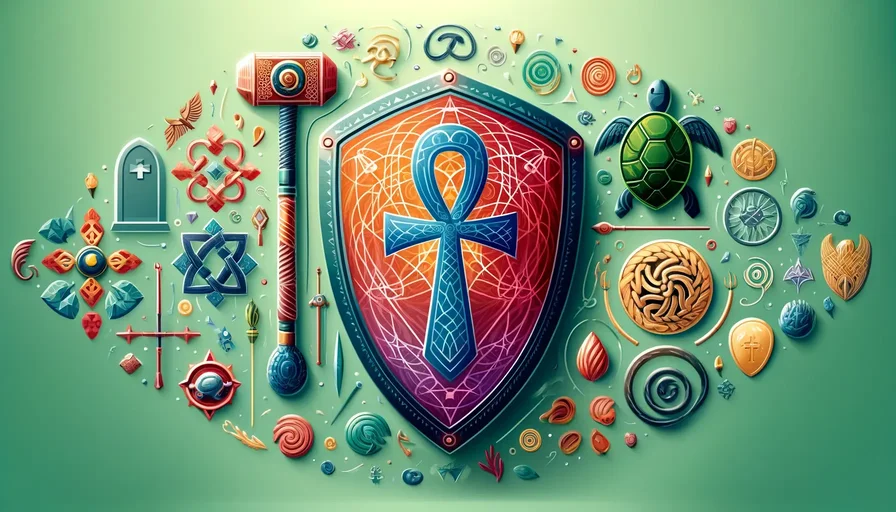Protective symbols are ancient and modern designs that promise to ward off bad vibes, making them your spiritual bouncers.
From the Cross to the Hamsa, these powerful icons shield you while adding a dash of style. Ready for spiritual protection with a flair? Keep reading to discover more!
What are Protective Symbols?
Protective symbols are designs, objects, or patterns that have long been associated with protective powers.
They are deeply rooted in different cultures and serve a common purpose: guarding against negative energy, bad luck, and other dangers.
Whether drawn, worn as jewelry, or used in rituals, these symbols often carry spiritual or mystical attributes.
They offer comfort and courage, providing a sense of safety and security in unpredictable times. Their continued relevance today shows their enduring importance.
Historical and Cultural Context of Protective Symbols
Historically, cultures worldwide have used specific symbols for protection. For instance, the Eye of Horus was revered in ancient Egyptian culture, while the Shield Knot was prominent among the Celts.
In Norse tradition, the Helm of Awe protected warriors. Native Americans often turned to animal symbols, such as turtles and bears, for spiritual security.
Meanwhile, the Hamsa is well-known in Islamic and Jewish traditions for warding off the evil eye. Christians look to the Cross for divine protection.
From architecture to pottery, jewelry, and religious texts, protective symbols embody sacred geometry, animal imagery, and other motifs that reflect a universal need for protection.
Importance of Protective Symbols in Modern Times
Even in the modern world, protective symbols remain important. People wear protective symbols as pendants or get them inked as tattoos.
They remind us of inner strength and create an energetic shield against everyday challenges. Symbols like Yin-Yang and the Flower of Life embody balance and harmony, helping people remain grounded and avoid negativity.
Despite the rapid pace of change today, these ancient symbols continue to keep us spiritually connected.
22 Protective Symbols for Warding Off Evil Eyes
Ancient Symbols
Egyptian Symbols
1. Eye of Horus:
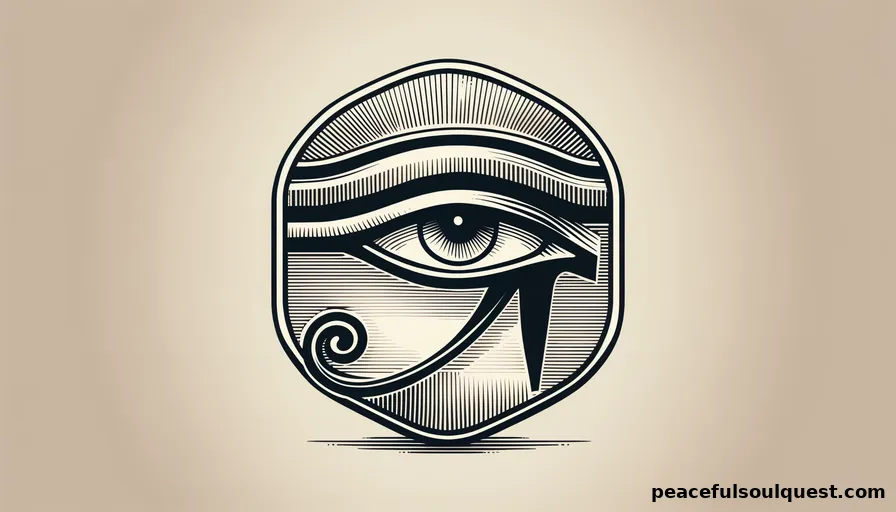
The Eye of Horus, also known as the Wadjet Eye, symbolizes protection, health, and wisdom in ancient Egyptian mythology.
This powerful protective symbol is associated with the sky god Horus, who lost his eye in a battle with Set.
The myth tells how the goddess Isis magically restored Horus’s eye, which later became a sacred emblem.
Ancient Egyptians used it as a protective amulet, incorporating it into pharaohs’ tombs and everyday items to safeguard against harm and promote good health.
2. Ankh:
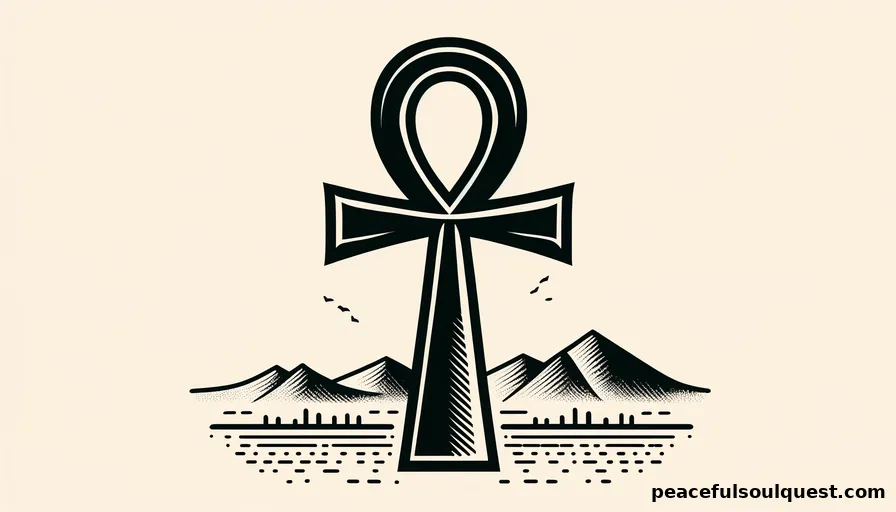
The Ankh is an ancient Egyptian symbol representing life and immortality. Often seen in the hands of deities, the ankh has a loop at the top and a crossbar below, suggesting the eternal cycle between life and death.
Ancient Egyptians regarded it as the key to life, using it to bless those in need and offer eternal protection. Today, it’s worn as jewelry or used in art to symbolize spiritual growth.
Norse Symbols
3. Helm of Awe:
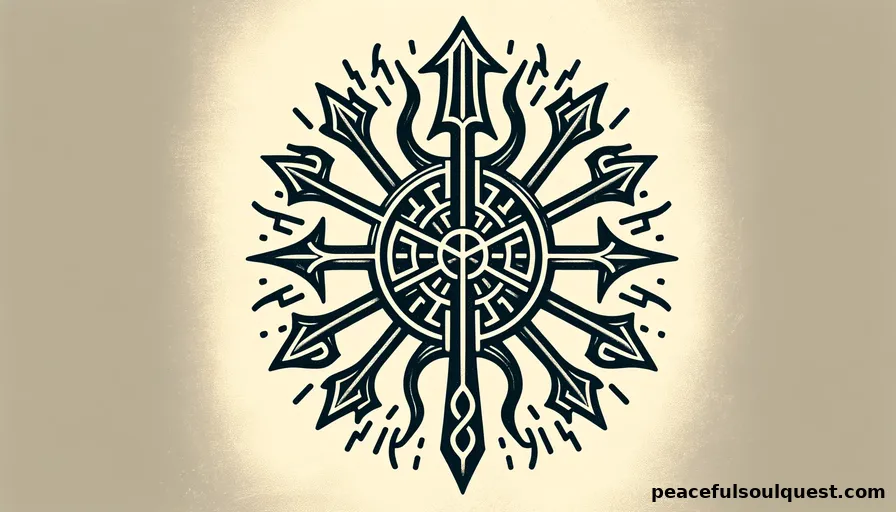
The Helm of Awe (or Aegishjalmur) is a symbol of protection and invincibility in Norse mythology.
With eight trident-like arms radiating from a central point, it is designed to instill fear in enemies and shield the wearer from harm.
Warriors used to draw or wear this protective symbol to gain strength and intimidate opponents. It remains popular among those who seek spiritual defense and inner strength.
4. Hammer of Thor:
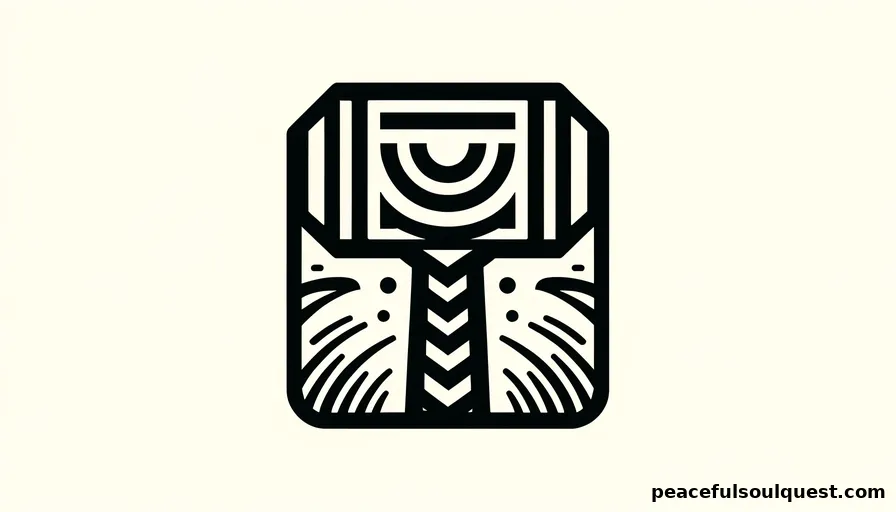
The Hammer of Thor (also known as Mjolnir) is a symbol of the Norse god’s power and strength.
Vikings often wore Mjolnir as a talisman to invoke Thor’s protection during their sea voyages and battles.
It represents Thor’s duty as a guardian, warding off evil and bringing good fortune to those who believe. This hammer is still used today in jewelry and art as a sign of spiritual protection.
Celtic Symbols
5. Shield Knot:
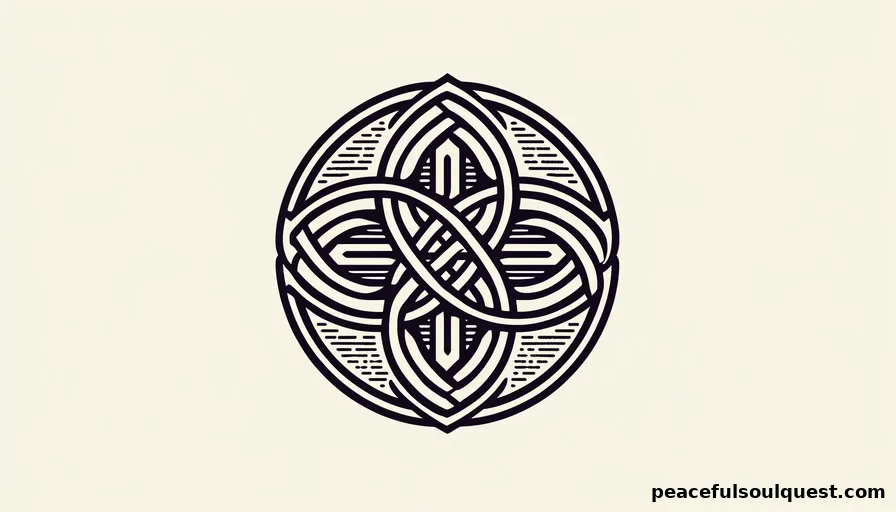
The Shield Knot is an ancient Celtic symbol consisting of four distinct loops that create an unbreakable, circular pattern. It was used to ward off evil spirits and provide a shield for warriors in battle.
The knot represents eternity and the continuity of life, reinforcing its purpose as a protector of one’s physical and spiritual well-being.
6. Triquetra:
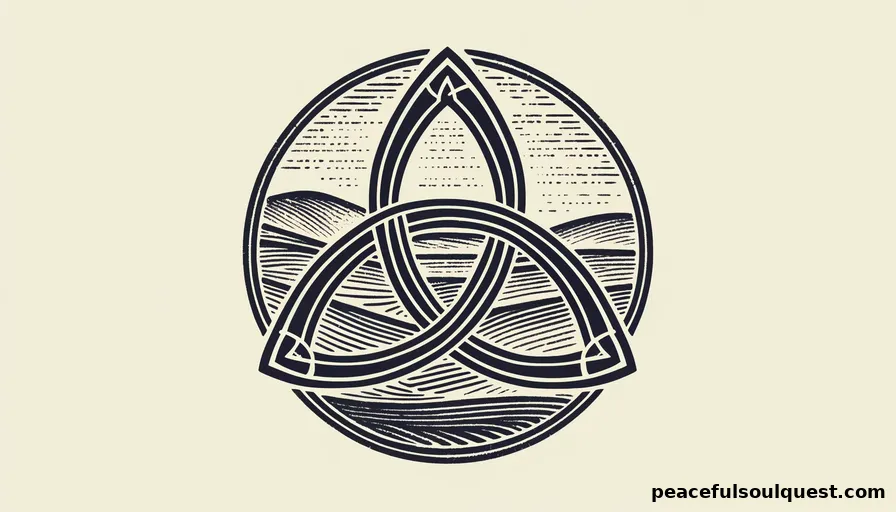
The Triquetra (also known as the Celtic Trinity Knot) is another important protective symbol in Celtic culture.
The design features three interconnected loops representing the tripartite nature of life: life, death, and rebirth.
The circle that sometimes surrounds the loops signifies eternity and the interconnectedness of all life. This knot is often used in jewelry and artwork to bring protection and unity.
Greek Symbols
7. Owl:
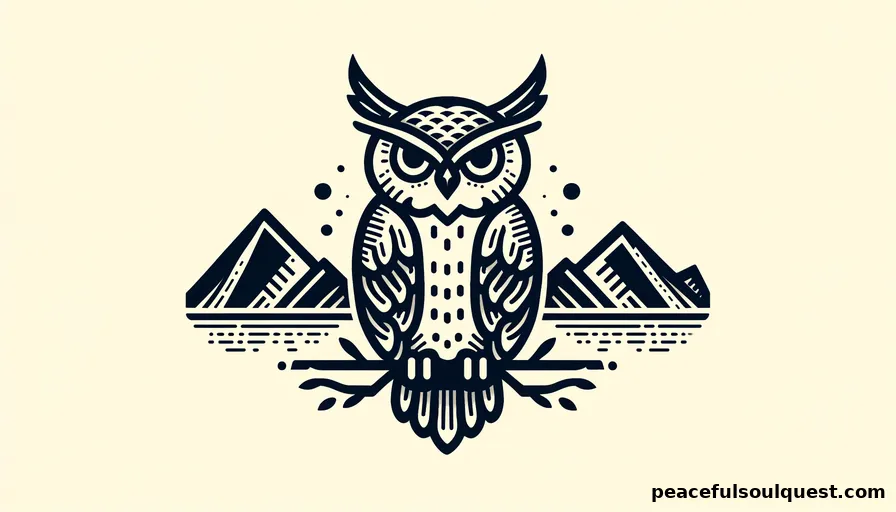
The owl represents wisdom, vigilance, and protection in Greek mythology. It is sacred to Athena, the Greek goddess of wisdom and warfare, and is considered a guardian of knowledge.
The owl was believed to reveal hidden truths, see through darkness, and ward off deceit. Greek coins and pottery frequently featured owls as a sign of good luck and security.
8. Triangle:
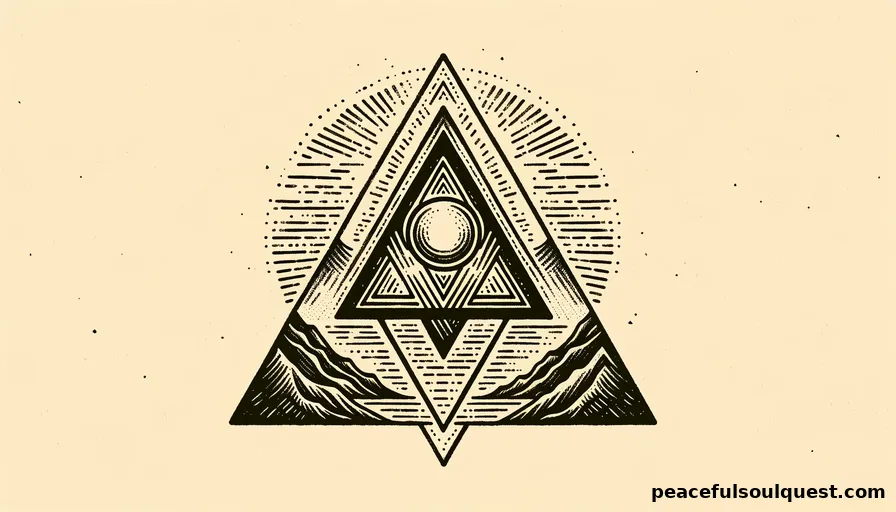
The triangle is a significant Greek symbol representing balance between the spiritual and physical worlds.
Pointing upward, it directs energy toward divine protection and helps ward off negative influences.
The Greeks used this shape in their architecture and sacred geometry because of its harmonious and protective properties. It remains a versatile emblem today, symbolizing strength and clarity.
African Symbols
9. Akoko Nan:
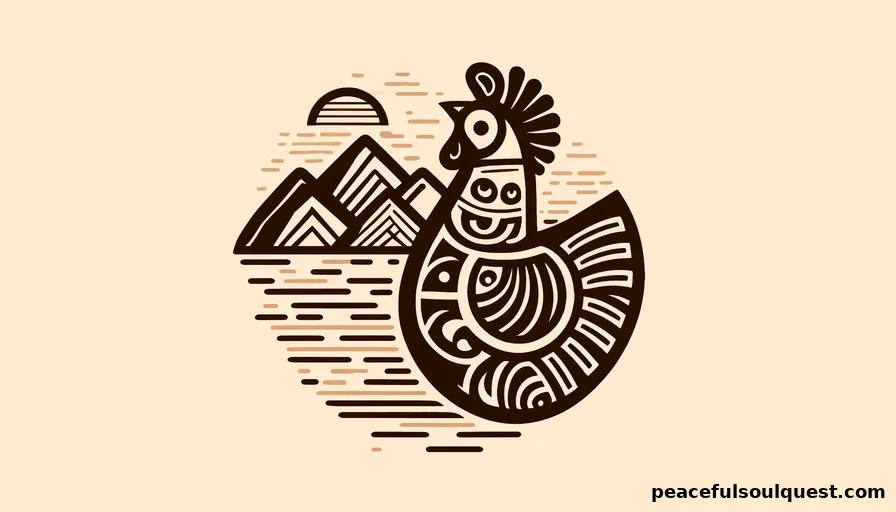
The Akoko Nan (Hen’s Leg) is a West African Adinkra symbol representing protection and care.
Inspired by the nurturing behavior of a hen toward her chicks, it highlights the importance of balancing gentleness with discipline.
This symbol promotes the idea that true protection requires both love and firmness, making it a guardian of family and community.
10. Adinkra Symbols:
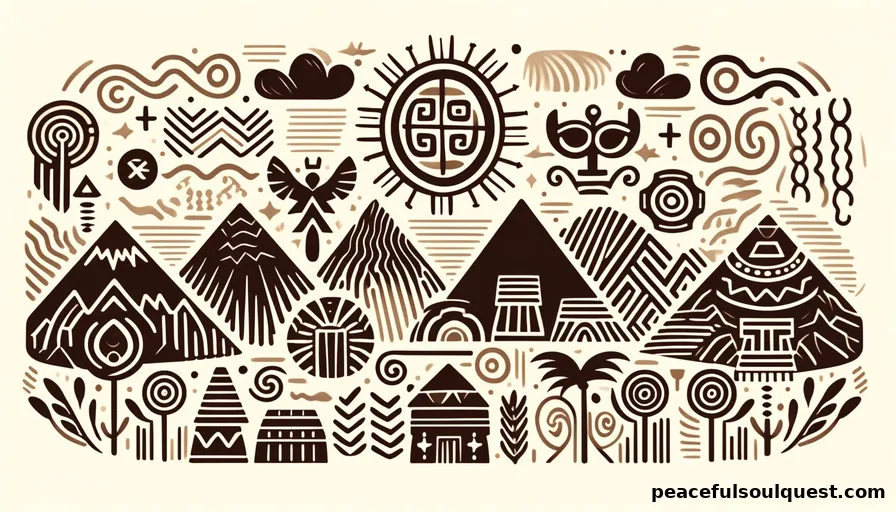
Adinkra symbols come from the Akan people of West Africa, each embodying different beliefs and values.
Some key protective symbols include Gye Nyame (“except for God”), which emphasizes the supreme power of God, and Nkyinkyim (“twistings”), which signifies resilience and adaptability.
They are often incorporated into jewelry, textiles, and artwork for spiritual protection.
Religious Symbols
Christianity
11. Cross:
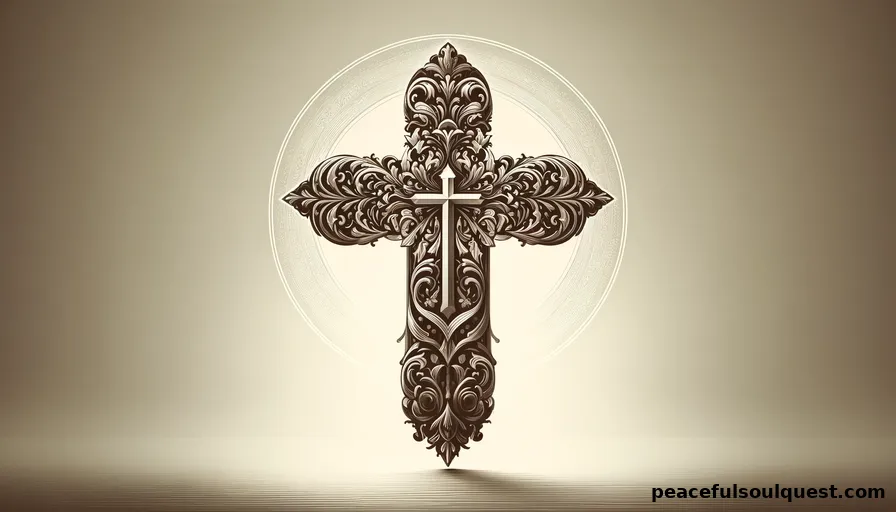
The Cross is the most recognized Christian symbol representing protection, faith, and redemption. It marks the crucifixion of Jesus Christ and signifies his sacrifice for humanity’s salvation.
Christians wear the cross as jewelry or display it prominently in homes and churches to evoke divine protection against evil.
The vertical and horizontal lines symbolize the union of heaven and earth. Its simplicity conveys a profound spiritual message, acting as a guiding light for those seeking faith and spiritual defense.
12. St. Andrew’s Cross:
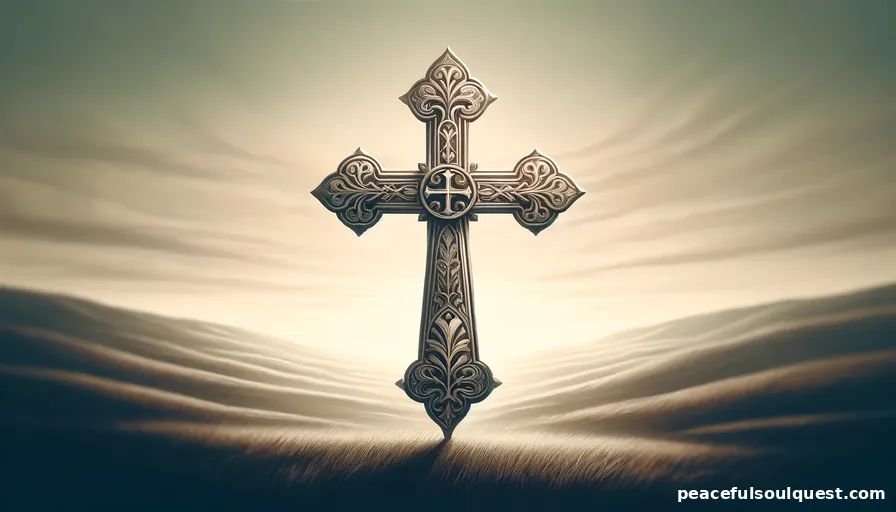
The St. Andrew’s Cross (or Saltire) is an X-shaped cross named after Saint Andrew, the apostle who chose to be crucified on this type of cross.
According to tradition, Saint Andrew felt unworthy to be crucified like Christ. The Saltire is also Scotland’s national flag, symbolizing steadfastness and faith.
It is a strong protective symbol, reminding Christians to be humble and unwavering in their beliefs.
Hinduism
13. Om
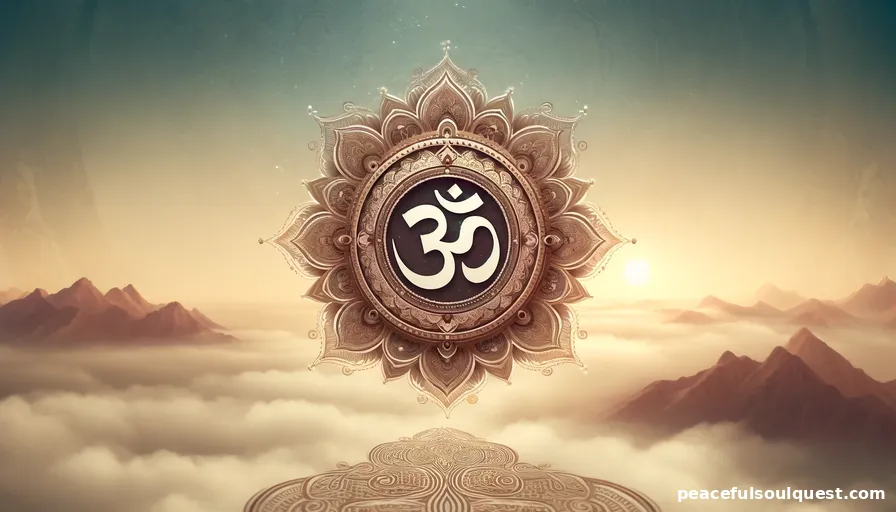
In Hinduism, Om is a powerful protective symbol that represents the cosmic sound of the universe. Chanting it aligns the spirit with divine energy and promotes harmony.
The written symbol visually represents this sound, with its lines and curves symbolizing different states of consciousness.
The sound Om itself creates a protective aura and strengthens one’s spiritual core. Devotees often chant or visualize Om during meditation for spiritual defense and clarity.
14. Abhaya Mudra
The Abhaya Mudra is a hand gesture representing fearlessness and protection. By raising the right hand with the palm facing outward, it offers reassurance of divine protection.
This gesture is often seen in depictions of Hindu deities like Buddha and Shiva. The mudra serves as a reminder that fear can be conquered with faith and positive action.
It encourages practitioners to embrace strength and remain fearless against adversity.
15. Judaism (Hamsa)
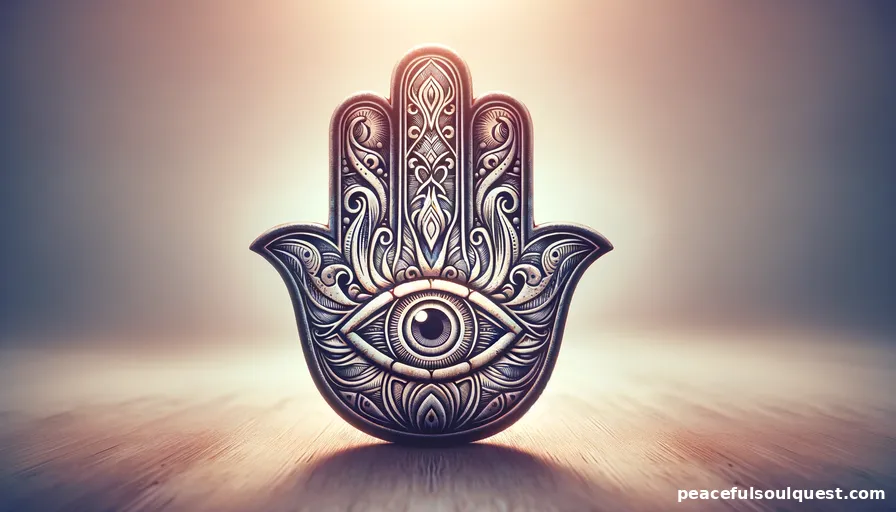
The Hamsa, also known as the “Hand of Miriam,” is a popular Jewish protective symbol used to ward off the evil eye.
Its five fingers extend outward from the palm, often featuring an eye at its center. The five fingers can represent the five books of the Torah, the five senses, or the five fingers of a hand.
This symbol is worn as an amulet or used in home decor to protect against negative energy. It is believed to invite blessings and positive energy into one’s life.
16. Islam (Hand of Fatima)

In Islamic tradition, the Hand of Fatima (or Hamsa) is named after Prophet Muhammad’s daughter. It serves as a reminder of the Five Pillars of Islam and the protection they provide.
The hand’s five fingers symbolize these pillars and are often believed to ward off evil.
The Hand of Fatima is worn as jewelry, like bracelets and necklaces, or placed in homes as wall art. It seeks to bring blessings, good luck, and spiritual protection.
Protective symbols have played significant roles across diverse cultures throughout history. Whether they come from ancient Celtic, Greek, African, Christian, Hindu, Jewish, Islamic, or Native American traditions, these symbols continue to inspire and protect in modern life.
They remind us that spiritual defense, mystical powers, and faith are timeless concepts that can be uniquely expressed through sacred geometry, talismans, and animal totems.
Nature-Inspired Symbols
Animal Symbols
17. Bear

In many cultures, the bear symbolizes strength and courage. Native American tribes view bears as protectors, often carving stone bears to act as talismans for good luck and protection.
In Norse mythology, berserkers would channel bear spirits to gain strength in battle. For the Celts, the bear represents maternal protection due to its fierce defense of its young.
Across cultures, wearing bear motifs or using them in artwork is believed to bestow leadership and bravery.
18. Turtle
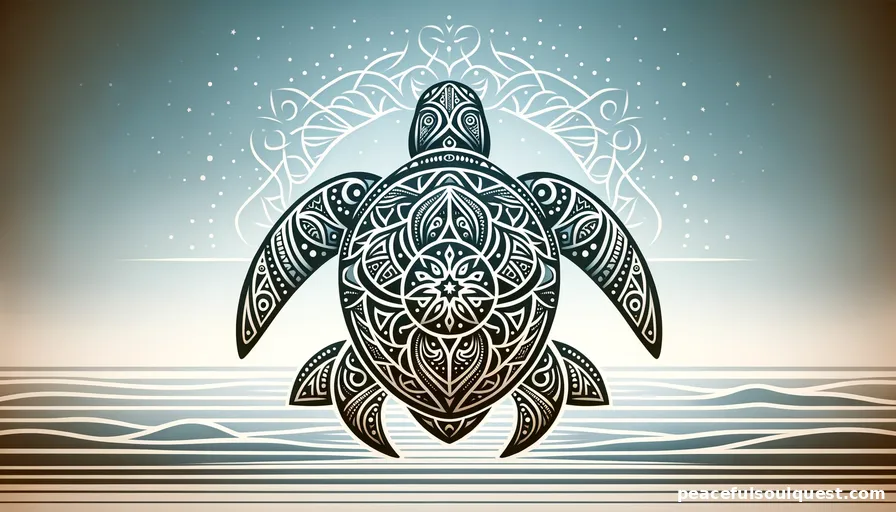
The turtle is a common symbol of longevity, wisdom, and perseverance. Native Americans believed that the turtle carried the world on its back, thus embodying stability and grounding.
It is thought to protect newborns, guiding them safely into the world. In some Asian cultures, turtles are linked to fertility and good fortune.
Wearing turtle charms or incorporating turtle patterns into textiles is said to bring resilience and emotional strength.
Plants and Trees
19. Tree of Life
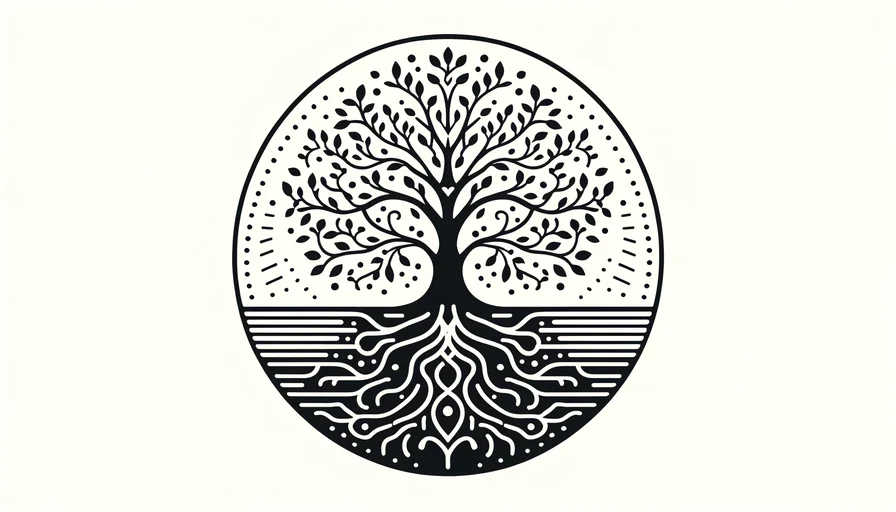
The Tree of Life is a widely recognized protective symbol across different cultures. In Celtic tradition, it represents the interconnection between life on earth, the heavens, and the underworld.
In Judaism, it is rooted in Kabbalistic teachings and symbolizes divine protection and immortality. Christians view the tree as a source of wisdom and a reminder of God’s providence.
Its branches signify unity and togetherness, while its roots remind us of our shared ancestry. The tree often appears in jewelry, home decor, and tattoos.
20. Lotus
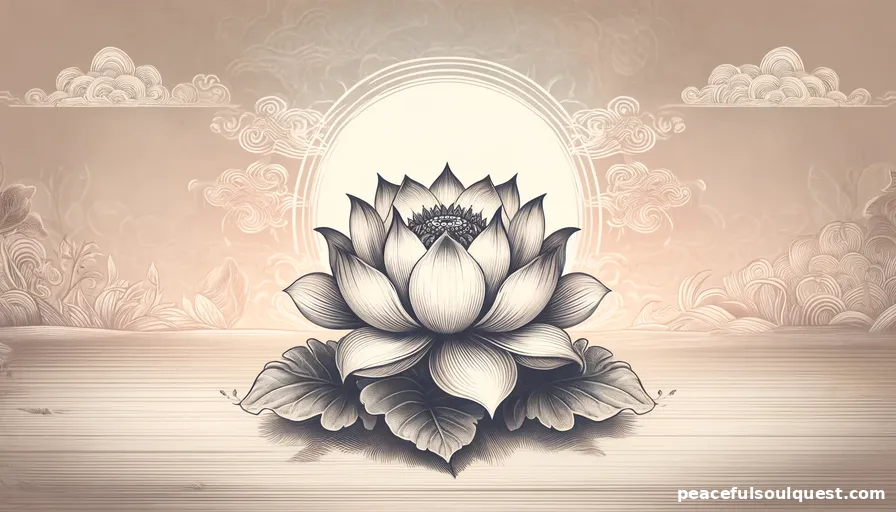
The lotus is a prominent symbol in Hinduism and Buddhism. It represents purity, enlightenment, and spiritual growth because of its ability to emerge untainted from muddy waters.
In Egyptian mythology, the lotus is linked to rebirth and the sun. Lotus flower motifs can be found in art, architecture, and jewelry, believed to offer spiritual protection and symbolize faithfulness.
Ocean Symbols
21. Shark Teeth
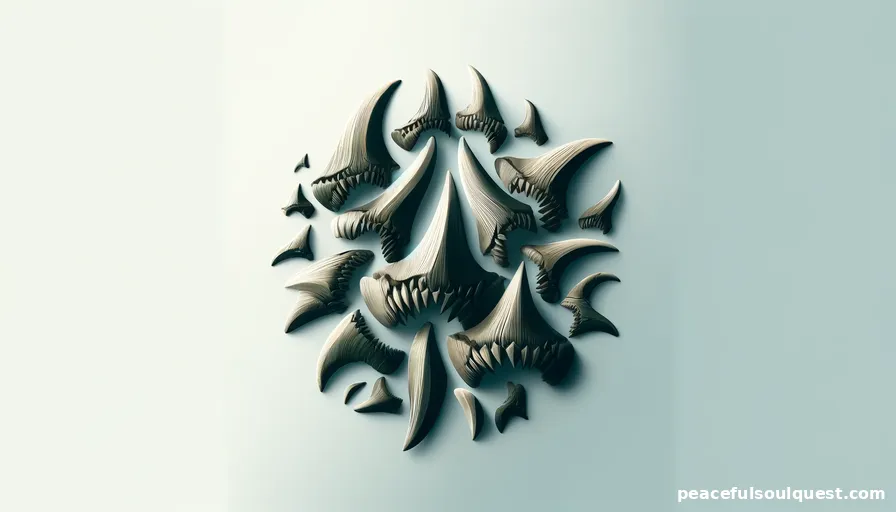
In Polynesian culture, shark teeth are a powerful symbol of protection. They are used to summon strength and guidance from the gods.
Sharks are seen as the apex predator of the ocean, symbolizing resilience and endurance. Polynesian warriors would wear shark teeth to invoke these traits, while others would incorporate them into carvings or tattoos.
Shark teeth are believed to deflect negative energy and danger, making them popular talismans today.
22. Tortoise

The tortoise is associated with wisdom and longevity, much like the turtle. Sioux tribes view the tortoise as a protector of new life and a shepherd of babies into the world.
The tortoise is also seen as a patient creature, representing stability and strength. Its hard shell symbolizes protection, and it is thought to ward off illness and harm.
The tortoise can be worn as an amulet or used in home decor to bestow good luck and longevity.
Symbolic Meanings and Functions
Defense Against Evil
Ward Off the Evil Eye
The Nazar Boncuk is a blue eye-shaped amulet that is popular in Turkey and surrounding regions. It is worn or displayed to protect against the evil eye, a malevolent glare believed to bring misfortune.
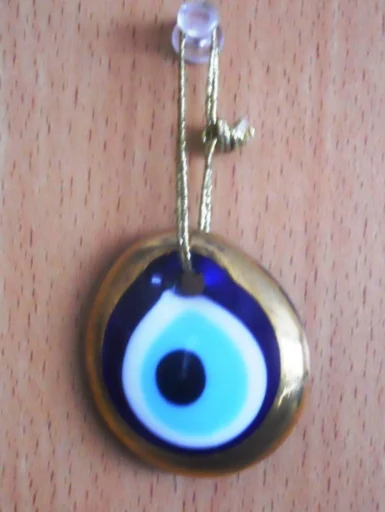
Similarly, the Hamsa is a palm-shaped amulet used in Jewish and Islamic traditions to ward off negative energy. Its five fingers often surround a central eye, symbolizing divine protection.
Protection in Rituals
Sigils are magical symbols used in rituals to manifest intentions and provide protection. They have evolved from marks representing specific deities or energies to personalized symbols that people use for spiritual defense.
In Latin American cultures, eggs are used to absorb negative energy during cleansing rituals. The healer passes an egg over the body to draw out negativity and restore the person’s well-being.
Spiritual Protection
The Flower of Life is a sacred geometry pattern made of overlapping circles. It represents the cycle of creation and connection among all living beings.
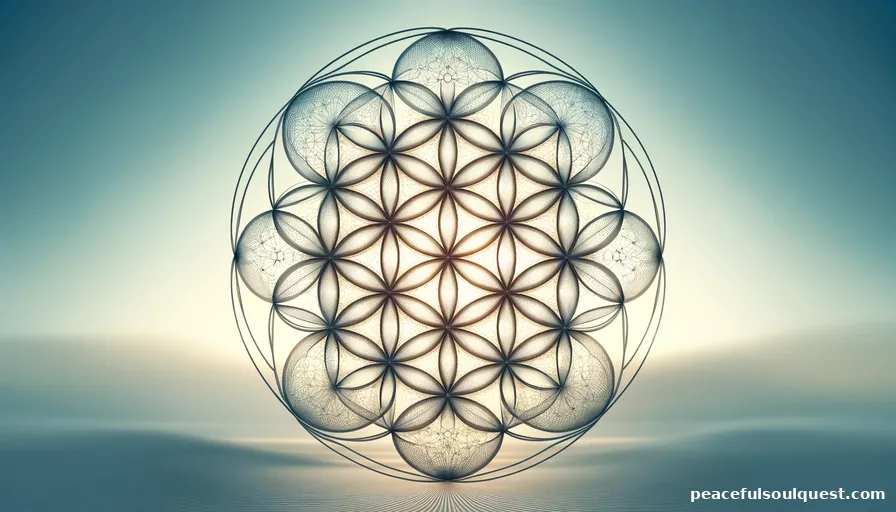
Displaying the Flower of Life is believed to strengthen one’s spiritual defense and harmonize energy.
The Bagua Mirror is a small round mirror in a Feng Shui arrangement. It reflects negative energy back to its source, protecting the home from harmful influences.

Protection in Daily Life :
Talismans are objects believed to hold mystical powers that protect their bearer. They can take many forms, including jewelry, coins, or stones.
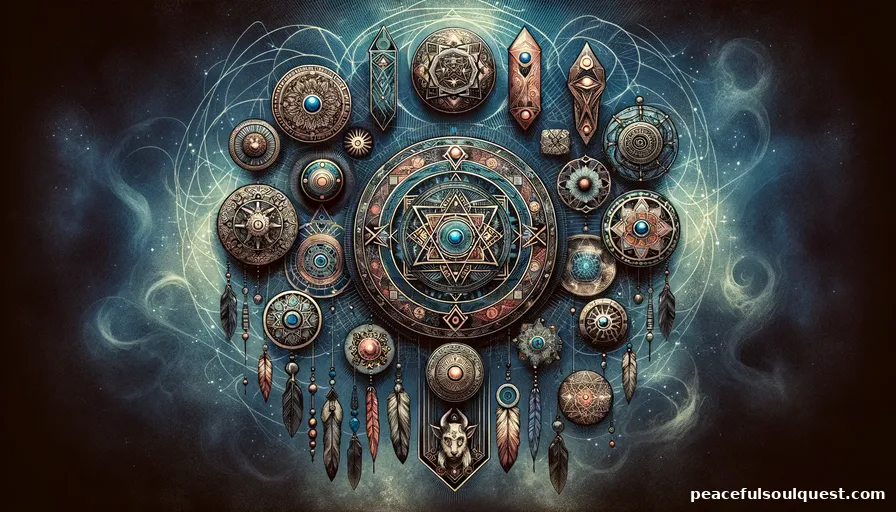
Talismans are often worn daily as necklaces, bracelets, or rings, providing ongoing protection.
Common motifs include animal totems, sacred geometry, and religious symbols like crosses or pentagrams.
Guidance and Strength
Strength Symbols
Shark teeth symbolize strength and endurance due to the shark’s reputation as a top ocean predator.
The bear represents physical power and courage, inspiring individuals to push through challenges.
Balance and Harmony :
The Yin-Yang is a Chinese symbol representing the balance between opposing forces. It encourages living in harmony and counteracts negative energy.
The triangle represents the interconnectedness of spiritual and physical worlds, focusing energy to defend against harm.
Courage and Leadership
The Helm of Awe symbolizes concentration and fearlessness in Norse mythology. The bear totem is known for its courage, providing protection and guidance.
Wisdom and Foresight
The owl embodies wisdom and perception, alerting to danger before it strikes. The turtle represents groundedness and perseverance, protecting the journey ahead.
These nature-inspired and symbolic meanings reflect how protective symbols empower and guide us in daily life, offering a sense of safety and strength.
Modern Usage and Adaptations
Decorative Purposes
Interior Décor
Protective symbols are increasingly used in interior decor to create safe and harmonious living spaces.
Symbols like the Tree of Life, Yin-Yang, and Flower of Life are commonly featured in wall art, tapestries, and sculptures, symbolizing growth, balance, and interconnectedness.
The Bagua Mirror is strategically placed to reflect negative energy away from the home.
Owls and turtles, representing wisdom and groundedness are powerful protective symbols. They often appear in figurines that are arranged around rooms to enhance safety and serenity.
Artistic Representations
Artists frequently incorporate protective symbols into their work to evoke feelings of security and strength.
Whether it’s paintings, ceramics, or sculptures, symbols like the Cross, Om, and Hamsa are visually represented to reflect spiritual protection.
Sigils and mandalas are often drawn or painted, creating intricate designs that hold deep personal meanings for viewers. These artistic expressions can double as both meaningful and decorative items.
Jewelry and Amulets
Pendants and Necklaces
Pendants and necklaces featuring protective symbols are worn close to the heart, making them a popular form of jewelry.
Pentacles and Crosses are used to display faith and protect against evil. Yin-Yang pendants represent balance, while Hamsa and Nazar Boncuk designs ward off the evil eye.
Animal totems like bears and turtles are also fashioned into necklaces for strength and stability.
Rings and Bracelets
Rings and bracelets are worn as talismans or amulets to harness the powers of symbols like the Ankh and Hammer of Thor.
The Shield Knot and Triquetra are incorporated into Celtic rings and bracelets, providing daily protection against negative forces.
Wadjet Eye rings, featuring the Eye of Horus, are believed to boost health and wisdom.
Clothing and Accessories
Symbols are also adapted for clothing and accessories. Many people wear shawls, scarves, and t-shirts adorned with protective symbols like the Tree of Life, Flower of Life, and Lotus.
Belts, keychains, and bags are also designed to feature these symbols, giving wearers a sense of security wherever they go.
Tattoos and Body Art
Common Designs
Protective symbols are often tattooed for personal protection. Some of the most common designs include the Cross, Pentacle, Ankh, Shield Knot, and Helm of Awe.
Each symbol holds unique meanings for those who choose them. Cross tattoos symbolize faith, while Pentacle tattoos represent mystical protection.
Celtic designs like the Shield Knot and Triquetra appeal to people seeking cultural connections.
Personalized Symbolism
Many people create personalized tattoos that combine protective symbols in meaningful ways. Some integrate different symbols to represent strength and resilience.
For instance, a Yin-Yang tattoo could be paired with Om for spiritual harmony. Others might add their names, significant dates, or quotes to shield themselves against negativity and adversity.
Final Thoughts
Protective symbols have transcended time and culture, adapting to the modern world through their incorporation in art, jewelry, and body art.
They serve as reminders of ancient wisdom and spiritual values, providing comfort and strength to those who seek them.
Whether for interior decor, pendants, tattoos, or rituals, these symbols empower people to connect with spiritual defense and mystical powers while warding off negativity.
Their timelessness and universality make them a potent means of fostering courage and resilience in a rapidly changing world.
